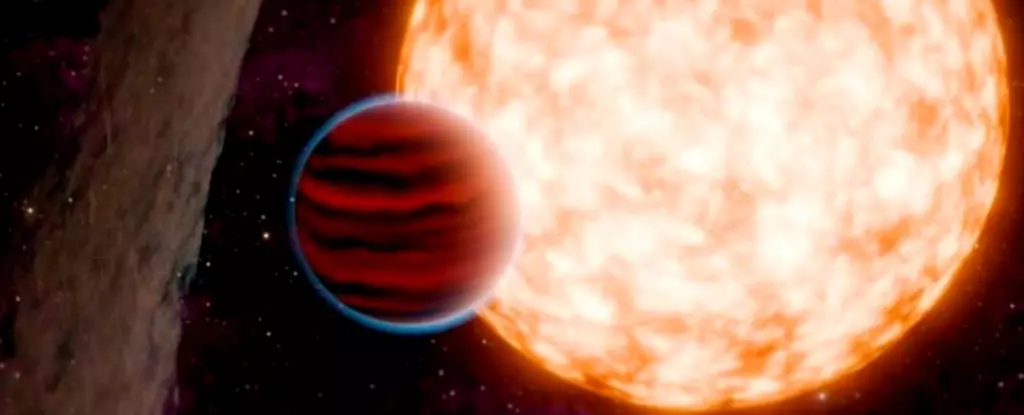The astronomical community has recently witnessed an extraordinary breakthrough with the identification of TIDYE-1b, one of the youngest exoplanets detected to date, at a mere 3 million years old. In stark contrast, our home planet, Earth, is approximately 4.5 billion years old. This significant age difference—1,500 times greater for Earth—places TIDYE-1b at a remarkable stage in the evolutionary timeline of planets. The very nature of this discovery opens a window for scientists to deepen their understanding of planetary formation, allowing researchers to refine and reevaluate existing models that explain how celestial bodies come into existence.
Madyson Barber, a graduate student at UNC-Chapel Hill and the lead author of a recent study, emphasizes the monumental implications of discovering such a young planet. “Astronomy helps us explore our place in the Universe,” Barber states. This sentiment underscores the inherent curiosity that drives astronomical research. By studying TIDYE-1b, scientists can observe the formative processes of planets. It is akin to capturing a snapshot of an evolving phenomenon as it unfolds in real-time.
Utilizing the transit method—a process where a planet obscures a portion of its star’s light—researchers were able to identify TIDYE-1b through data collected from NASA’s Transiting Exoplanet Survey Satellite (TESS). This method has been successful in identifying over a dozen young planets ranging from 10 to 40 million years old previously, but none have been as young as TIDYE-1b.
The rarity of young celestial bodies like TIDYE-1b is primarily due to their being nestled within a protoplanetary disc—an accumulation of gas and dust surrounding a young star. This debris field typically obscures planets still forming. The fortunate visibility of TIDYE-1b is attributed to its unique orbital characteristics; it orbits its star at a non-aligned angle compared to the main protoplanetary disc. According to Andrew Mann, an associate professor at UNC-Chapel Hill, this tilted configuration challenges prevalent models of planetary formation, which usually posit that planets develop from a flat disc of dust, resulting in a ‘pancake-flat’ arrangement of planets, as seen in our solar system.
Characteristics of TIDYE-1b
Orbiting its star in just nine days, TIDYE-1b’s close proximity invites comparisons to two classes of planets—super-Earths and sub-Neptunes. These categories, which are not represented in our solar system, appear to be abundant across the Milky Way. Although TIDYE-1b is less dense than Earth, it boasts a diameter roughly 11 times larger. This finding not only contributes to existing knowledge but also serves as compelling evidence that planets can form much earlier in a star’s life cycle than previously thought. The absence of younger planets in earlier research does not imply they do not exist; rather, it signifies that they have been largely left undetected due to obscuration.
Implications for Future Research
The discovery of TIDYE-1b radically shifts the paradigm of planetary formation studies, presenting opportunities for deeper inquiry into how planets manifest within varying environmental conditions. As astronomers continue to uncover more examples of nascent planets, they will be critical for testing and refining current hypotheses in astrophysics.
Furthermore, research on young planets enhances our comprehension of the potential for habitability. Understanding the diverse classes of planets that can arise offers more clues about the potential for life, as certain conditions may allow for the later development of habitable environments.
As TIDYE-1b nudges the boundaries of our understanding, it exemplifies how discovery in science often leads to more questions than answers. Each new find serves as a reminder of the vastness of the universe and our quest to comprehend it. With advanced tools like TESS and continued dedication from the scientific community, the exploration of young exoplanets like TIDYE-1b lays the groundwork for unlocking the mysteries of our cosmos—enriching our understanding of where we came from and where we might be heading.


Leave a Reply